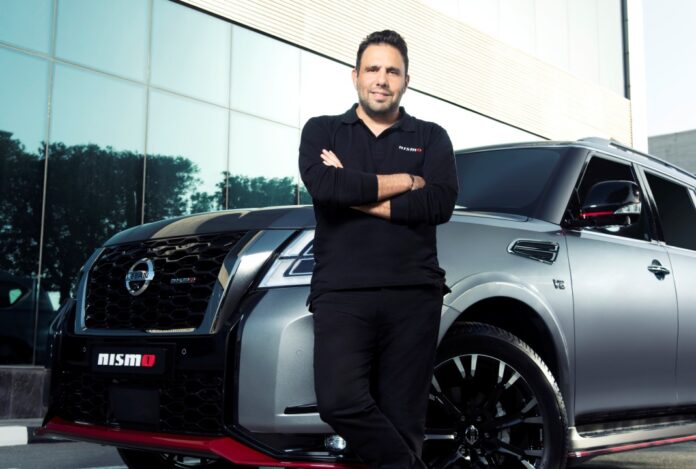At the crossroads: Balancing disruption and stability in the automotive industry
By Thierry Sabbagh, Managing Director, Nissan Middle East
As we kick-off Nissan’s fiscal year 2021 this April, it has been particularly fascinating for us to look back on the pandemic and track the evolving perspective on the impact of the COVID-19 on businesses in the automotive industry. One can quickly draw parallels to a traffic light: the initial red freeze on activity at the outset, to a green resumption of business as part of a ‘new normal’, and now a flashing amber as the situation continues to evolve with subsequent waves of the pandemic.
Cautious optimism is the latest buzzword – businesses continue to keep their finger on the pulse of day-to-day developments across various markets, and are making swift decisions accordingly. A key takeaway, however, is that we are not yet in a post-COVID world. Across the world, lockdowns and restrictions remain enforced, supply chains continue to be affected, and the long-term effects of the pandemic have fundamentally impacted customer confidence.
But even outside of external factors, automotive brands have realized that their pre-COVID success patterns are not guaranteed to work in the future, and stagnancy can put them in an uncompetitive position. So how can players in the auto industry strive for long-term stability, while also establishing themselves as disruptors in the evolving mobility ecosystem? By putting resiliency on their agenda.
Building greater resilience is imperative for brands to address the challenges of today, while also preparing companies for changes that are yet to come. For true impact, full measures need to be deployed – from building a future-focused strategy and streamlining the supply chain to consistently implementing actions to achieve their goals, all while leveraging technologies and adapting rapidly when needed.
Following Nissan’s transformation journey began last year with the announcement of Nissan NEXT, our focus has been on refocusing our growth and innovation model to ensure long-term success, as we chart our course for the future.
Firstly, the electric revolution is here to stay. The auto industry is taking a deeper look into their environmental impact, with some players actively pursuing a more sustainable future. A large part of this involves accelerating investments and innovation in electrification and manufacturing technology. Nissan’s 2050 carbon neutrality goal for example, includes electrifying every all-new Nissan vehicle offering in key markets by the early 2030s.
The Middle East has made strides in this space in recent years – but there is a long way to go. Various mobility, energy and government partners across the region need to work collaboratively to build a supportive ecosystem for electric mobility. The interest in electrification and sustainable energy management is growing, with sustainability being a core element at events such as Expo 2020 Dubai, taking place later this year. As the event’s Official Automotive Partner, we look forward to facilitating these discussions and help drive fundamental change for a sustainable future.
Our relationship with cars has changed. The past year has shed light on a stark dichotomy in consumer behaviour and preferences. On the one hand, consumers are increasingly seeing mobility and car ownership as not mutually exclusive, particularly with remote working and flexible Mobility as a Service (MaaS) models including car subscription. However, COVID-19 has driven consumer preference for safer and private means of transportation. Together, this has heightened consideration for options that reduce the cost and commitment of car ownership – with many now looking at leasing options and pre-owned cars.
While some may consider a threat to auto companies, it should also be seen as an opportunity for collaborations to provide desirable mobility solutions for customers. There remains a strong demand amongst customers to purchase a brand-new car, but these solutions can supplement these sales, alongside other leasing and pre-owned options from dealerships themselves. This not only expands their customer base, but also offers financial flexibility, safety and reliability in order to provide peace of mind to prospective buyers.
Underscoring all these efforts is ensuring product and service excellence. While disrupting the ‘traditional’ automotive industry model will be instrumental for brands, it is equally important to get the basics right, and deliver consistently to customers. End-to-end digitization of the consumer journey will continue to be a priority, but needs to move beyond to sales-centric touchpoints to build digital experiences that customers want to engage with. Similarly, the physical car-buying experience needs to adopt learnings from e-commerce to be more personalized, intuitive, and customer-oriented.
Creating this synergy will helps brands leverage the best of both online and offline approaches – and as competition continues to build, will help brands effectively and holistically convey what their brands stand for, position themselves as industry leaders, and subsequently drive consideration amongst consumers.
While last year saw a reckoning for the automotive industry, there is hope on the horizon with the ongoing rollout of vaccines and other technological advancements. The ‘external factor’ traffic lights may continue to change through the year, but automotive brands need to take the wheel and reinvent themselves to become agile, adaptable and resilient in order to truly embark on a journey to a positive long-term future.




























Recent Comments